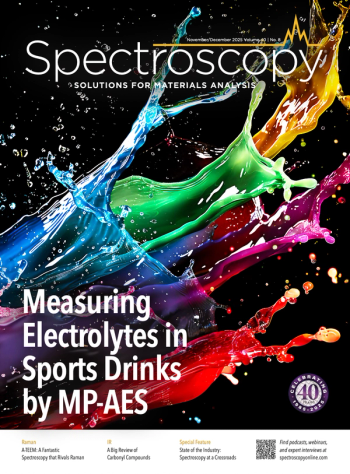
Using a Portable IR-ATR Spectrometer to Analyze Food
Scientists compared a portable infrared attenuated total reflection spectrometer (ATR) to a conventional ATR Fourier transform infrared (ATR FT-IR) system.
Researchers from the Institute of Analytical and Bioanalytical Chemistry at Ulm University in Germany recently published a study comparing the use of a portable and compact infrared (IR) attenuated total reflection spectrometer (ATR) to a conventional ATR Fourier transform infrared (ATR FT-IR) system.
The portable infrared attenuated total reflection (IR-ATR) device operates on a compact modular system structure that combines a microelectromechanical (MEMS) thermal light source, a pyroelectric linear array detector (PLAD), and a linear variable filter (LVF) for precise IR wavelength discrimination. This portable instrument configuration allows the device to selectively analyze specific wavelengths of infrared light. The pyroelectric linear array detector captures the incident infrared radiation, while the liquid crystal variable filter enables the device to isolate and target particular wavelengths for analysis. This modular approach enhances the device's versatility and accuracy in conducting spectroscopic analyses, making it a useful spectrometer.
The scientists, who published their findings in the
“Of particular interest is the fact that the comparison of compact ATR devices with conventional ATR FT-IR spectrometers yields similar analytical performance characteristics, which facilitates a multitier analytical concept combining medium-resolution in-field data with high-resolution laboratory data, as recently proposed by the European Union project PHTONFOOD (No. 101016444),” the scientists wrote in the study.
Using a compact or portable spectrometers could better allow scientists to perform analysis in the field to help ensure the quality and safety of food. There were some differences between the portable spectrometer and the Fourier transform IR device, however the scientists concluded it was not overall detrimental to the data.
“It is anticipated that appropriately adapted multivariate data evaluation schemes considering limitations such as the nonconstant spectral resolution will further advance the utility of these devices in industrial monitoring and quality control scenarios,” they wrote.
Future studies, they said, should aim to analyze more complex samples including real fish and extracts from cereals containing fungal contaminants.
Reference
- Fomina, P.; Femenias, A.; Hlavatsch, M.; Scheuermann, J.; Schäfer, N.; Freitag, S.; Patel, N.; Kohler, A.; Krska, R.; Koeth, J.; Mizaikoff, B. A Portable Infrared Attenuated Total Reflection Spectrometer for Food Analysis. Applied Spectroscopy. 2023, doi:
10.1177/00037028231190660
Newsletter
Get essential updates on the latest spectroscopy technologies, regulatory standards, and best practices—subscribe today to Spectroscopy.



